How this Singaporean came to make pasta ‘as good as an Italian grandmother'
A Singaporean face might not be what you expect as the emblem of meticulously hand-crafted pasta. Yet private dining chef Lee Yum Hwa has carved that very distinction for himself though his passion for the rustic Italian tradition.
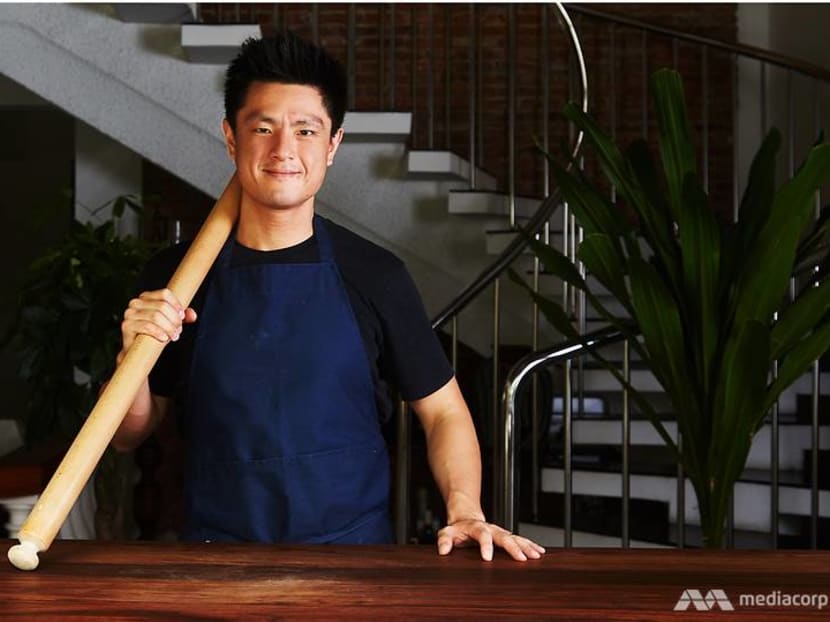
Lee Yum Hwa is the self-taught pasta maker behind private dining outfit Benfatto95. (Photo: Kelvin Chia)
Every time Lee Yum Hwa sees a plate of pasta swimming in sauce, his heart breaks a little. “Pasta should be about texture and simplicity. The sauce is the secondary layer, the embellishment of the dish,” said the 38-year-old as we sit by a wooden table in his family’s warmly lit semi-detached home.
This is typically the sentiment of wizened Italian pasta maestros, who prize the texture and intrinsic flavour of well-made pasta above all else. But here in Singapore, where native Italian chefs have been serving hand-made pasta in restaurants for decades, Lee has become the improbable face of the artisanal art.
In the 18 months since he established Benfatto95, a private dining establishment dedicated to the intricacies of making and serving fresh pastas, Lee has earned a cult following of aficionados who appreciate his devotion to the exacting, finicky craft.
“A lot of restaurants use pasta as a canvas, but I think it should stand out on its own. I’m a pasta maker rather than a chef or a cook.” – Lee Yum Hwa
READ> Da Paolo’s latest venture: 30 years on, a bigger slice of Italy in Singapore
THE ITALIAN CONNECTION
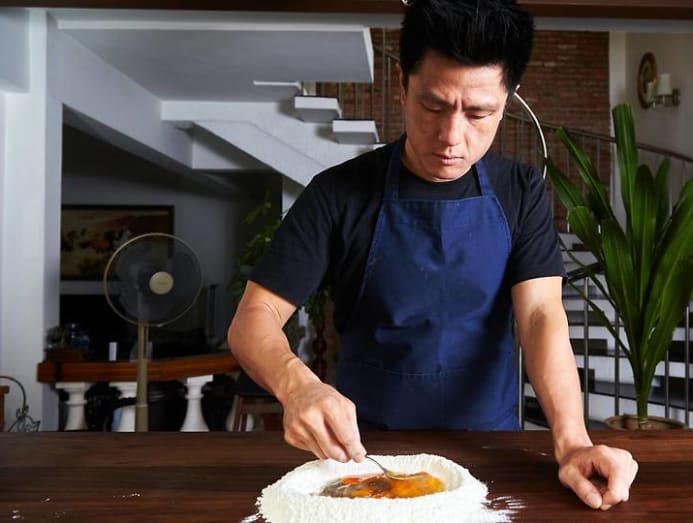
The flint that sparked lee’s passion was a solo trip to Italy in 2016. “I went to Milan, Bologna and Tuscany, and spent a lot of time at little trattorias where I would sit and slowly savour the bite and flavours of the different pasta dishes.”
The inability to recapture the experience at restaurants back home led to something of an epiphany: He would learn how to do it himself.
The internet became his finest resource. Lee watched YouTube videos, connected with pasta makers on Instagram, and read whatever he could on the art of making pasta. A year later, his honeymoon provided another excuse to return to Italy where the newlyweds ate their way through Lombardy, Tuscany, Emilia-Romagna and Sicily.
When they returned, Lee swapped his job as a tax consultant for one as a line cook at Middle Eastern-inspired restaurant Artichoke, owned by his secondary school friend Bjorn Shen. A year later, he felt ready to open his own restaurant, which Shen, a seasoned restaurateur familiar with the pitfalls of the business, advised him against. “It was Bjorn that suggested I start with private dining instead,” he said. That’s how Benfatto95 was born.
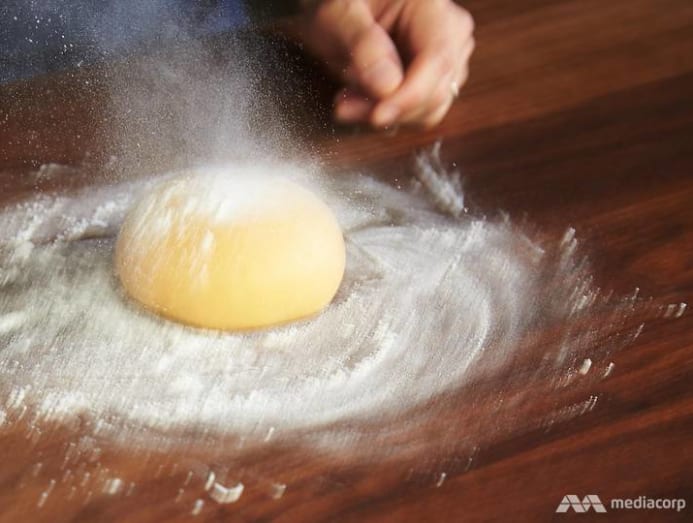
READ> Singapore’s smallest restaurant? Bjorn Shen’s new pizza bar seats only four
FROM INSTAGRAM TO IRL
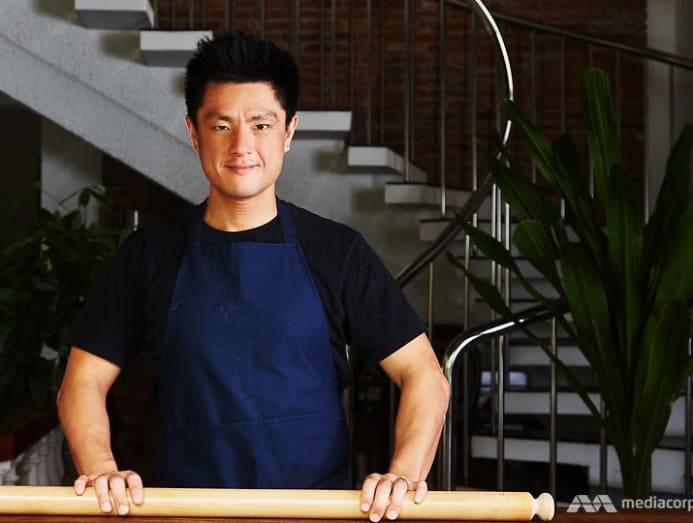
To eat at Benfatto95 (which translates to well-made in Italian, while 95 is a nod to the address) is to become familiar with a hearty parade of pastas of varying shapes and textures. Guests might enjoy Bari-style orecchiette, capellacci di zucca (pasta stuffed with pumpkin and squash in browned butter), silky ribbons of hand-cut tajarin, and extruded tubes of canestri tossed in a spicy amatriciana sauce.
Where YouTube has been a valuable instructor in these creations, Instagram has opened doors to the real world, giving Lee the opportunity to refine his technique under pasta maestras such as Tokyo-based Sardinian Claudia Casu, whom he has become firm friends with.
“I met Claudia on Instagram. She makes this thread-like Sardinian pasta called filindeu, which has received a lot of limelight recently and has the reputation as the rarest pasta in the world, so I guess that’s one of the things that brought me to her,” he explained.
Lee visited Casu twice in Tokyo last year, spending four to five days at her home each time, observing and helping her make pasta. They met again in Sardinia, where Casu conducted a workshop on ancient Sardinian formats. “I was the only young Chinese male among the small group of middle-aged Italian women,” he said. “I felt very out of place since I don’t speak any Italian, but we were all interested in making pasta and became quite close-knit.”
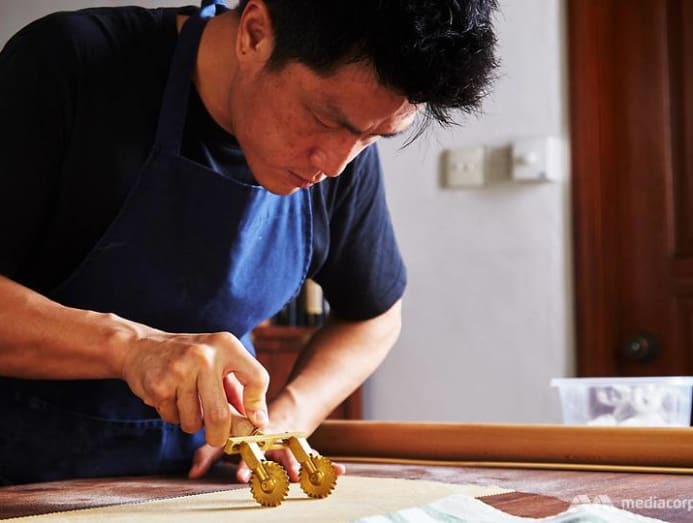
The duo went on to the town of Morgongiori, where Casu arranged for them to meet a lady who showed them how to make twisty ring-shaped lorighittas. Lee then flew to Puglia where he met with another Instagram friend, a local pasta maker who taught him how to make Bari-style orrechiette.
Further along in Emilia-Romagna, he stopped by cookery school La Vecchia Scuola Bolognese, where he learnt the art of rolling pasta with a mattarello (a long wooden rolling pin) before heading to another maestra near Ferrara, who taught him how to make cappellacci di zucca Ferrarasi, a traditional filled pasta, among other shapes.
These experiences gave him assurance and credibility to his work. “Before meeting them, I was always figuring it out on my own without any formal or professional direction. Obviously, there is no one here [in Singapore] qualified enough to teach me or show me the techniques in this very niche area that I’m sitting in. So by meeting and working with them, I was able to get the confidence and also their endorsement that whatever I was doing and continue to do is in line with the traditional practices and techniques,” Lee said.
ALL-CONSUMING PASTA
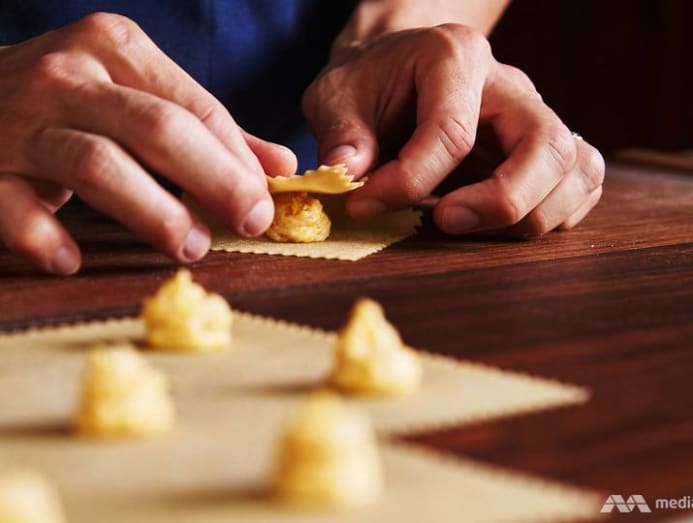
Back home, pasta quite literally fills his days. Lee serves dinner for between six to 10 guests four to six times a week, and as a single-man operation, answers emails, cooks and cranks out pastas for his dinners and the occasional retail sale.
Good pasta is all about practice, and finding the time to hone his labour-intensive craft has proven the most difficult thing of all. “You can learn from the best, but you have to practice, and it’s hard to find the time to between all that,” he admitted.
Still, he has the respect of Italian chefs who admire Lee’s dedication and efforts towards their hallowed culinary traditions. Mirko Febbrile, chef de cuisine of Michelin-starred Italian restaurant Braci, said, “I admire and respect Yum Hwa’s strength, perseverance, patience, dedication and research; his long hours of study, the trips to many regions to find a new type of pasta, technique or interesting recipe.
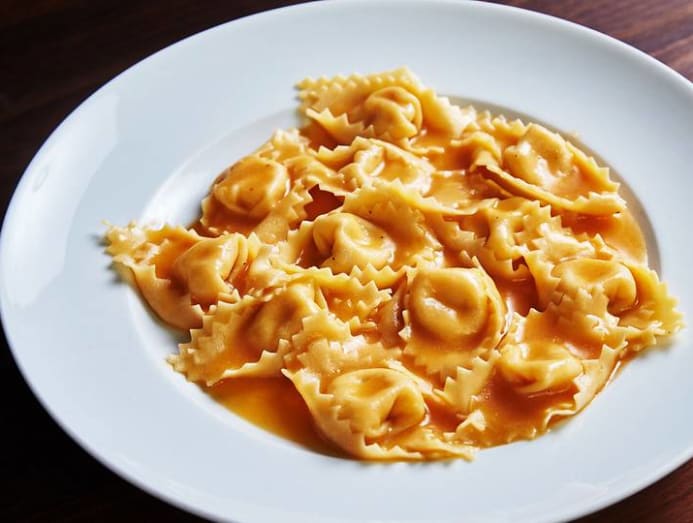
When asked what surprises him most about his new profession, Lee’s is quick to answer: “The biggest surprise is how long I’ve lasted. This (private dining) set-up is only viable in the short-term because I don’t know how long private kitchens will be trending for… and I can’t do this when I’m 80.”
Yet he keeps at it because “it’s the only thing I know that keeps me happy”.
“People ask me why I’m interested in pasta. If you look around, there are few people who appreciate this product in itself. A lot of restaurants use pasta as a canvas, but I think it should stand out on its own. I’m a pasta maker rather than a chef or a cook, so unlike chefs and restaurants that use pasta as a canvas for sauces and embellishments like truffles and red prawns, I’m about tradition, techniques and how pasta is engineered,” he said.
“My travels and work in the past year have helped me understand how a pasta should be made so that it’s enjoyable and palatable,” he continued.
“And that’s not by drowning it in sauce?” I venture.
“I guess that’s the result of adapting it to the local palate,” he answered diplomatically.





